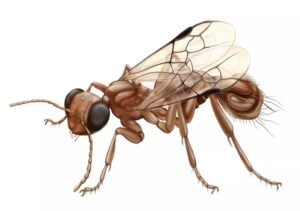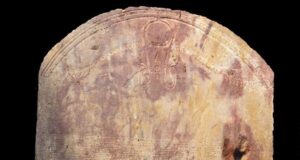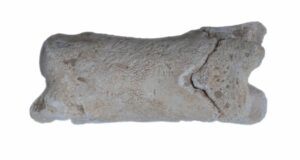“Ancient Amber Holds Shocking Secret: Unearthed ‘Venus Flytrap’ Wasp Could Change Our Understanding of Parasitism!”
Ever thought a wasp might have a flair for horror film aesthetics? Well, grab your popcorn and hold on to your hats because Sirenobethylus charybdis—a name that rolls off the tongue like a Greek tragedy—has an abdomen that’s sure to make your skin crawl. Picture a wasp that not only resembles today’s buzzers but also boasts a Venus flytrap-like apparatus designed for, let’s just say, a rather unsettling brunch. This freaky fossil, recently unearthed by researchers from China and Denmark, is being hailed as a sinister throwback to a time when the Cretaceous world wasn’t just a playground for dinosaurs. With an eerie appearance that would make a great case for an indie horror flick, this extinct parasitic wasp traps its prey and lays eggs in them, all while you’re wondering how you ever found wasps charming. Curious to dive deeper into the nightmare? LEARN MORE.
At first glance, Sirenobethylus charybdis may look like a wasp you’d see today — but a closer look reveals a horrifying “grasping apparatus.”
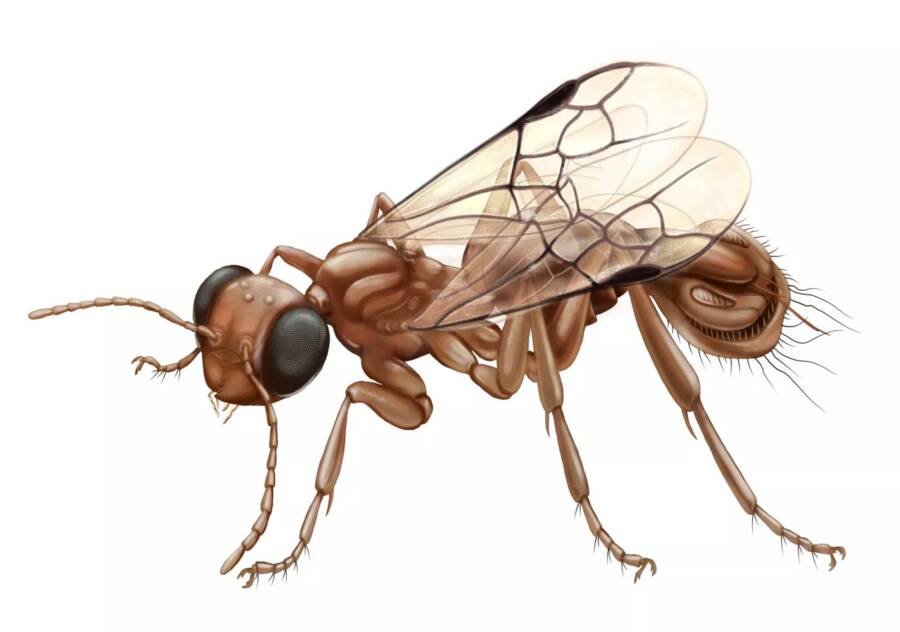
Qiong WuAn artist’s impression of Sirenobethylus charybdis.
Researchers from China and Denmark recently discovered a terrifying — and thankfully extinct — species of parasitic wasp that used a Venus flytrap-like abdomen to trap its prey before laying eggs in its victims.
Experts named this prehistoric wasp Sirenobethylus charybdis after the Greek mythological sea monster Charybdis, as detailed in a study published in BMC Biology. The study was the result of analyzing over a dozen wasps preserved in 99-million-year-old amber found in Myanmar’s Kachin region.
It was a joint effort between researchers from the Natural History Museum of Denmark and the Capital Normal University in China, and the amber itself was originally donated to the Capital Normal University by a private collector who purchased it in 2015. This is of particular note because, in 2020, the Society for Vertebrate Paleontology advised researchers to avoid working with amber acquired in Myanmar after 2017, as the resin trade was connected to funding violence amidst the country’s ongoing political turmoil.
Sirenobethylus Charybdis, The Prehistoric Wasp With A Venus Flytrap-Like Apparatus
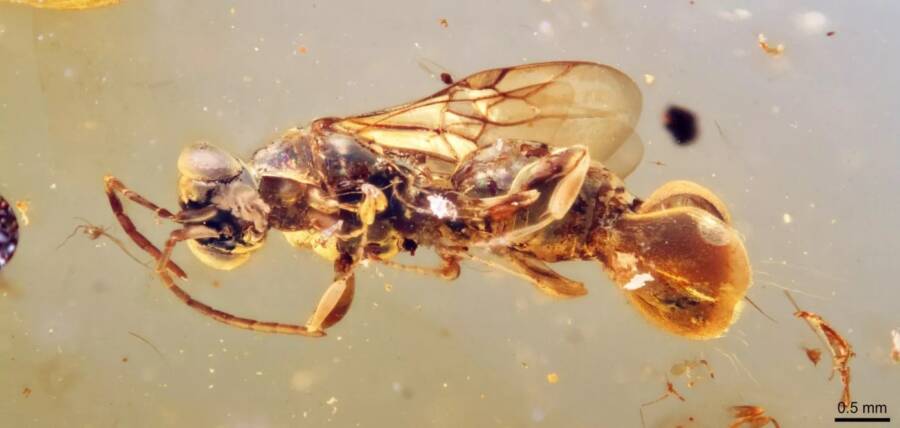
Qiong WuA Sirenobethylus charybdis specimen in amber.
Based on the researchers’ observations of 16 female specimens preserved in amber, using micro-CT scanning, S. charybdis was estimated to have lived around 98.79 million years ago during the mid-Cretaceous period. And while S. charybdis somewhat resembles the wasps of today, there is one noticeably distinct feature: its Venus flytrap-like abdomen.
The morphology of this wasp suggests it was a parasitoid, an insect whose larvae live as parasites inside hosts before killing the hosts. It’s likely that the wasp allowed its host to continue growing while it fed on it — and the paddle-shaped structure on its abdomen played a key role in this cycle.
The apparatus, which looks similar to a Venus flytrap plant, featured hair-like bristles and three flaps. Based on researchers’ observations, they said this structure likely restrained the wasp’s prey as it laid its eggs. They also said that it is unlikely that S. charybdis would have been able to pursue prey over long distances, meaning it is more likely that it lay hidden with the apparatus open, waiting to capture a potential host.
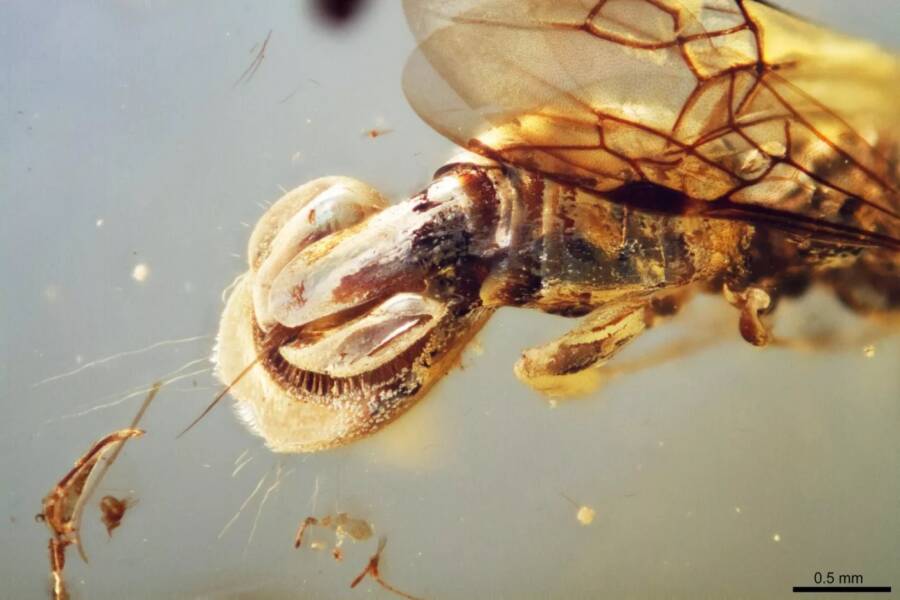
Qiong WuA close-up of the grasping apparatus of S. charybdis.
The paper also notes that its “elaborate” abdomen is unlike that of any known insect, even when compared to modern wasps.
“I’ve seen a lot of strange insects, but this has to be one of the most peculiar-looking ones I’ve seen in a while,” said entomologist Lynn Kimsey from the University of California, Davis, who was not involved in the study.
Discoveries such as these also highlight why the amber trade in Myanmar is so lucrative — and why, in recent years, that has become a problem.
The Amber Trade In Myanmar Has Been Linked To Funding Violence
According to a 2022 report from Science, Myanmar’s amber trade was found to be linked to violent conflict in the country. While amber can be beneficial to paleontological pursuits, as the new discovery shows, it is also unfortunately a key element of the ethical issues plaguing Myanmar.
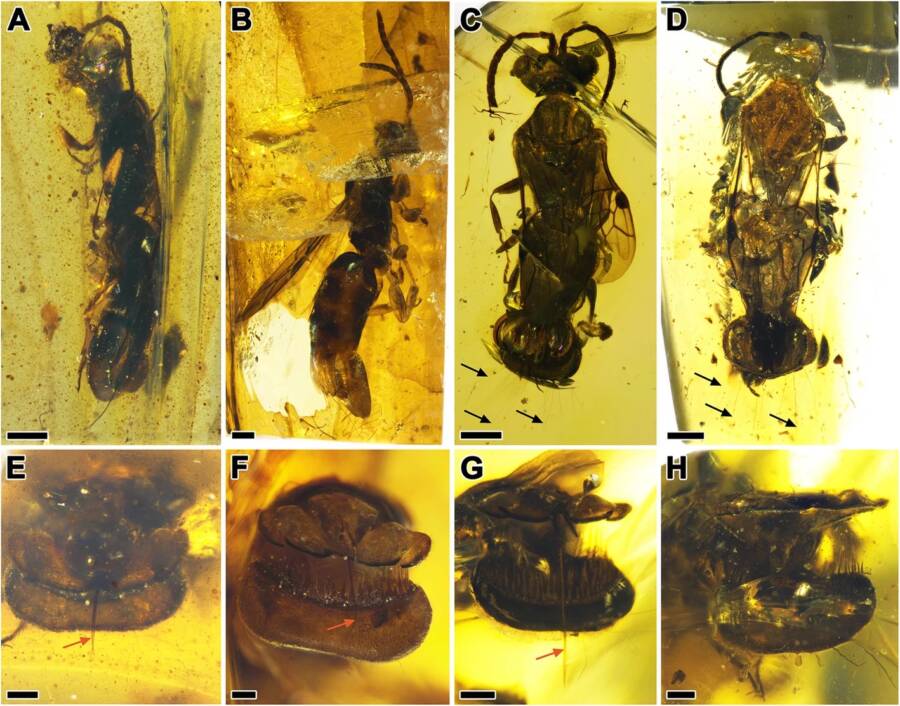
Qiong WuS. charybdis trapped in amber.
The amber trade brings in an estimated $1 billion yearly, and because many amber mines are found in Kachin, some of that revenue has been used to fund the ongoing conflict between the Kachin Independence Army and the Myanmar government military. The two groups have been battling since the 1960s, and both sides have benefitted from the amber trade.
But in 2019, a United Nations Human Rights Council mission determined that the military was guilty of genocide and crimes against humanity, and a year later, the Society of Vertebrate Paleontology released new guidelines on conducting research with Myanmar amber, specifically asking scientists only to conduct their research on Myanmar amber that had been acquired prior to 2017 (which was when the military took over the mines).
